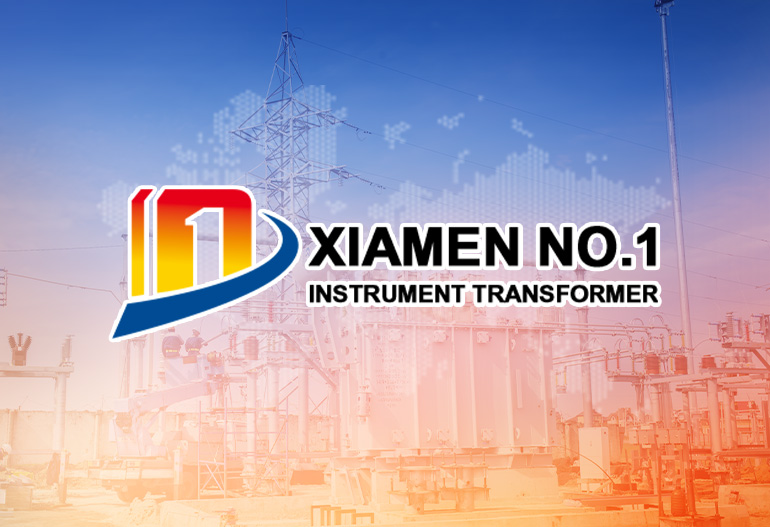Space-Saving Outdoor Voltage Transformers for Compact Substation Layouts
Urbanization: Limited available land in cities demands equipment that fits within tight boundaries (e.g., between buildings or in underground vaults).
Cost Efficiency: Smaller layouts reduce civil engineering expenses, land purchases, and installation time.
Renewable Integration: Solar and wind farms require compact substations near generation sites, where space is often constrained by terrain or environmental protections.
High-Performance Materials: Replacing conventional oil-impregnated paper (OIP) with epoxy resin or silicone rubber reduces insulation thickness. For example, epoxy-based insulation has a dielectric strength of 20–30kV/mm (comparable to OIP’s 15–25kV/mm) but allows for tighter winding configurations.
Solid Insulation Integration: Dry-type VTs using cast epoxy or resin-impregnated paper (RIP) eliminate the need for oil tanks, reducing diameter by 40–50% compared to oil-immersed counterparts. A 66kV dry-type VT, for instance, may have a diameter of 300mm versus 500mm for an oil-immersed unit.
Optimized Electric Field Distribution: Finite element analysis (FEA) simulates electric fields to eliminate unnecessary insulation bulk. Tapered insulation layers and embedded field-grading foils ensure uniform stress distribution, allowing thinner insulation without increasing partial discharge (PD) risk.
Low-Loss Core Materials: Amorphous metal alloys or grain-oriented silicon steel with high permeability reduce core size by 20–30% while maintaining low hysteresis losses. A smaller core directly shrinks the overall VT diameter.
Concentrated Winding Layouts: Secondary windings are wound in compact, multi-layer configurations around the core, minimizing axial length. Primary windings use high-conductivity copper or aluminum conductors with thin insulation to reduce radial build-up.
Integrated Primary Connections: Bushings (insulating conductors) for primary voltage input are shortened and angled to reduce protrusion from the VT body, further saving space in the substation layout.
Composite Enclosures: Fiberglass-reinforced polymer (FRP) or silicone rubber enclosures are lighter and more compact than traditional porcelain, with integrated sheds (for creepage distance) that eliminate the need for external insulators. A 33kV composite-enclosed VT may have a creepage distance of 1200mm (meeting pollution class 3 requirements) in a 1.2m height, compared to 1.5m for a porcelain unit.
Integrated Mounting Systems: Base plates with pre-drilled holes allow direct attachment to substation gantries or walls, eliminating the need for separate support structures. Some designs include pivot mounts for angular adjustment, optimizing placement in tight spaces.
No Oil or Gas: Eliminating fluid insulation removes the need for expansion tanks and hermetic seals, reducing volume by 50% compared to oil-immersed VTs.
Molded Construction: Primary and secondary windings are encapsulated in epoxy resin in a single casting, creating a monolithic structure resistant to moisture and vibration.
Example: A 110kV dry-type resin-cast VT typically measures 400mm in diameter and 1.5m in height, fitting in spaces as narrow as 0.5m²—ideal for urban compact substations.
Pressurized Enclosure: SF₆ gas (at 0.2–0.4MPa) provides insulation in a sealed metal casing, reducing diameter by 30% compared to air-insulated designs.
Integrated with Switchgear: Often mounted directly on gas-insulated switchgear (GIS) busbars, eliminating separate installation space.
Tradeoff: Higher cost than dry-type VTs but suitable for extreme pollution or high-humidity environments.
Shared Core and Enclosure: A common magnetic core and composite enclosure house both voltage and current sensing windings.
Application: Ideal for feeder circuits in compact substations, where space for separate CTs and VTs is limited. A 33kV combined unit typically occupies 0.3m², compared to 0.6m² for separate devices.
Thermally Conductive Materials: Epoxy resins filled with aluminum oxide (Al₂O₃) nanoparticles enhance heat transfer from windings to the enclosure.
Natural Convection Optimization: Finned enclosures increase surface area for heat dissipation without increasing footprint. A 66kV dry-type VT with fins achieves a 15°C lower operating temperature than a smooth enclosure design.
Temperature Class Compliance: Ensuring operation within Class A (105°C) or Class B (130°C) limits to prevent insulation degradation.
Vacuum Casting: Resin is cast under vacuum to eliminate air bubbles, reducing PD inception voltage (PDIV) to below rated voltage.
Interface Engineering: Using compatible materials (e.g., epoxy and silicone rubber with matched coefficients of thermal expansion) to prevent delamination, a common source of PD.
PD Monitoring: Embedded sensors in high-voltage designs (e.g., 110kV+) detect early PD activity, enabling predictive maintenance.
Reinforced Enclosures: FRP enclosures with internal steel ribs withstand short-circuit forces up to 200N (for 110kV systems).
Vibration Testing: Compliance with IEC 60068-2-6 (vibration) and IEC 60068-2-27 (shock) ensures durability in industrial or seismic zones.
Low-Loss Cores: Amorphous metal cores minimize magnetizing current, ensuring ratio error <0.5% and phase error <20 minutes at rated load.
Burden Optimization: Designing for low secondary burden (e.g., 5–10VA) reduces voltage drop in windings, maintaining accuracy under varying load conditions.
Vertical Mounting: Wall or pole mounting reduces ground footprint, freeing space for other equipment (e.g., circuit breakers, surge arresters).
Close-Coupled Arrangements: Placing VTs adjacent to busbars or switchgear minimizes cable length and reduces overall substation footprint. For example, a 110kV compact substation with vertically mounted VTs can achieve a 40% smaller footprint than one with horizontally placed units.
Modular Design: VTs are preassembled with other components (e.g., surge arresters, disconnectors) into modular skids, reducing on-site installation time and space requirements.
Traditional Layout: Required 80m² with oil-immersed VTs (each 0.8m²) and separate support structures.
Compact Design: Adopted dry-type resin-cast VTs (0.3m² each) mounted vertically on switchgear panels. Total substation footprint reduced to 45m² (44% savings).
Performance: VTs maintained Class 0.5 accuracy, with PD levels <5pC and operating temperatures <80°C under full load.
3D-Printed Insulation: Additive manufacturing creates complex, customized insulation geometries with minimal material waste, reducing size by a further 10–15%.
Nanocomposite Insulation: Graphene-reinforced epoxy improves dielectric strength by 20%, allowing thinner insulation layers in future designs.
Digital Integration: Smart VTs with built-in IoT sensors (for temperature, PD, and vibration) eliminate the need for external monitoring equipment, saving additional space.



